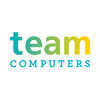Windows Administrator
30+ Windows Administrator Interview Questions and Answers

Asked in Infosys

Q. What is RAID and what are its different types?
RAID (Redundant Array of Independent Disks) is a data storage technology that combines multiple physical drives into a single logical unit.
RAID provides improved performance, fault tolerance, and data protection.
There are several types of RAID configurations, including RAID 0, RAID 1, RAID 5, RAID 10, etc.
RAID 0 offers improved performance by striping data across multiple drives, but it lacks redundancy.
RAID 1 mirrors data across multiple drives for redundancy but doesn't pro...read more

Asked in Infosys

Q. How do you handle online data backups?
Online data backup can be achieved through various methods and technologies.
Use cloud storage services like Microsoft Azure, Amazon S3, or Google Cloud Storage.
Implement backup software solutions like Veeam, Acronis, or Commvault.
Utilize network-attached storage (NAS) devices for local backups.
Create redundant copies of critical data to ensure data integrity.
Regularly test and verify the backup and restore processes.
Consider implementing a disaster recovery plan to handle dat...read more
Windows Administrator Interview Questions and Answers for Freshers

Asked in i2k2 Networks

Q. What is the difference between per device and per user in RDP CAL license?
Per device RDP CAL license is assigned to a specific device while per user RDP CAL license is assigned to a specific user.
Per device license allows multiple users to access the licensed device while per user license allows a user to access multiple devices.
Per device license is cost-effective for organizations with multiple users sharing a single device while per user license is cost-effective for organizations with multiple devices shared by a single user.
Per device license ...read more

Asked in Infosys

Q. How would you migrate from one host to another?
Migrating from one host to another requires careful planning and execution.
Assess the current environment and identify any dependencies
Create a plan for the migration, including timelines and potential risks
Test the migration in a non-production environment
Communicate the migration plan to all stakeholders
Execute the migration during a scheduled maintenance window
Verify that all data and applications have been successfully migrated
Monitor the new environment for any issues po...read more

Asked in Hostnetindia

Q. What is your knowledge of DNS and DHCP, and how do they function?
DNS translates domain names to IP addresses, while DHCP assigns IP addresses to devices on a network.
DNS (Domain Name System) resolves human-readable domain names (e.g., www.example.com) to IP addresses (e.g., 192.0.2.1).
DHCP (Dynamic Host Configuration Protocol) automatically assigns IP addresses and other network configuration to devices on a network.
DNS uses a hierarchical structure with DNS servers, including root servers, TLD servers, and authoritative servers.
DHCP lease...read more

Asked in Hostnetindia

Q. What is your knowledge of Internet Information Services (IIS), and in what contexts is it used?
IIS is a web server software by Microsoft for hosting websites and applications on Windows servers.
IIS supports various web technologies like ASP.NET, PHP, and HTML.
It provides features like authentication, security, and URL rewriting.
IIS can host multiple websites on a single server using host headers.
It integrates with Windows Server for easy management and deployment.
Commonly used for intranet applications, public websites, and web services.
Windows Administrator Jobs




Asked in Infosys

Q. What will you do if vCenter goes down?
I will troubleshoot the issue and try to bring vcenter back online as soon as possible.
Check the network connectivity between vcenter and its hosts
Check the vcenter server logs for any errors or warnings
Restart the vcenter services
If necessary, restore vcenter from a backup
Notify relevant stakeholders about the issue and expected downtime

Asked in Hostnetindia

Q. What are hosting panels, and what are their uses?
Hosting panels are web-based interfaces for managing server resources and hosting services efficiently.
Simplify server management tasks like domain management, email setup, and database management.
Examples include cPanel, Plesk, and DirectAdmin.
Allow users to manage multiple websites from a single interface.
Provide tools for monitoring server performance and resource usage.
Facilitate automated backups and security management.
Share interview questions and help millions of jobseekers 🌟


Asked in Hostnetindia

Q. What is your knowledge of email services?
I have extensive knowledge of email services, including configuration, management, and troubleshooting of email systems.
Understanding of SMTP, IMAP, and POP3 protocols for email transmission and retrieval.
Experience with Microsoft Exchange Server for managing corporate email services.
Familiarity with cloud-based email services like Microsoft 365 and Google Workspace.
Knowledge of email security measures, including spam filtering and encryption.
Ability to configure email client...read more

Asked in Deloitte

Q. How do you troubleshoot a failover cluster failure?
To troubleshoot failover cluster failure, check cluster resources, network connectivity, event logs, and run cluster validation tests.
Check cluster resources to ensure they are online and functioning properly
Verify network connectivity between cluster nodes
Review event logs for any errors or warnings related to the cluster
Run cluster validation tests to identify any configuration issues
Restart cluster services if necessary

Asked in NetConnectGlobal

Q. Types of backup, file sharing permission
Types of backup include full, incremental, and differential. File sharing permissions include read, write, and execute.
Full backup: backs up all data
Incremental backup: backs up only changes since last backup
Differential backup: backs up changes since last full backup
File sharing permissions: read allows viewing of files, write allows editing of files, execute allows running of files

Asked in SAS

Q. Describe some user cases and how you would solve them.
User cases in Windows Administration involve troubleshooting, user management, and system optimization.
User Account Management: Create, modify, and delete user accounts based on role requirements.
Group Policy Implementation: Use Group Policy Objects (GPOs) to enforce security settings across the network.
System Monitoring: Utilize tools like Performance Monitor to track system performance and identify bottlenecks.
Backup and Recovery: Implement regular backup schedules using Wi...read more

Asked in UST

Q. How do you configure failover clustering?
Failover clustering can be configured by setting up multiple servers to work together to maintain high availability of services.
Install the Failover Clustering feature on all servers
Configure shared storage for the cluster
Create a cluster and add the servers to it
Configure cluster networks and network priority
Configure cluster quorum settings
Test failover to ensure proper functionality

Asked in SAS

Q. Active Directory Configuration and it’s uses
Active Directory is a directory service used by Windows networks to store information about users, computers, and resources.
Centralized management of network resources
Authentication and authorization of users and computers
Group policy management for security and configuration settings
Single sign-on for users to access multiple resources
Integration with other Microsoft services like Exchange Server and SharePoint

Asked in Infosys

Q. What is your server's configuration?
Our server runs on Windows Server 2016 with 64GB RAM, 1TB HDD, and dual Intel Xeon processors.
Windows Server 2016 operating system
64GB RAM
1TB HDD
Dual Intel Xeon processors

Asked in TCS

Q. What is WSUS what is Dns
WSUS stands for Windows Server Update Services, a tool used by Windows administrators to manage and distribute updates within a network. DNS stands for Domain Name System, a system that translates domain names to IP addresses.
WSUS is used to centrally manage and distribute updates for Windows operating systems and other Microsoft products.
DNS is responsible for translating domain names into IP addresses to locate resources on the internet.
WSUS helps in ensuring that all syste...read more

Asked in TCS

Q. What is server virtualization?
Server virtualisation is the process of creating virtual instances of servers on a single physical server.
Allows for better resource utilization by running multiple virtual servers on one physical server
Increases flexibility and scalability of IT infrastructure
Reduces hardware and maintenance costs
Examples include VMware, Hyper-V, and VirtualBox

Asked in TCS

Q. What is Windows Server?
Windows Server is a server operating system developed by Microsoft.
Windows Server is designed to handle network infrastructure, messaging, databases, and other server applications.
It provides services such as file and print sharing, web services, and virtualization.
Examples of Windows Server versions include Windows Server 2019, Windows Server 2016, and Windows Server 2012.

Asked in Diadem Technologies

Q. Explain the different types of network protocols.
Network protocols are rules that determine how data is transmitted over a network, ensuring communication between devices.
TCP/IP: The foundational protocol suite for the internet, enabling reliable communication.
HTTP/HTTPS: Protocols for transferring web pages; HTTPS adds a layer of security.
FTP: File Transfer Protocol used for transferring files between client and server.
SMTP: Simple Mail Transfer Protocol for sending emails.
DNS: Domain Name System translates domain names in...read more

Asked in NTT

Q. What is Windows patching?
Windows patching is the process of applying updates, fixes, and security patches to the Windows operating system.
Windows patching helps to keep the operating system secure and up-to-date.
Patches can include bug fixes, security updates, and new features.
Regular patching is important to protect against vulnerabilities and cyber attacks.
Examples of patching tools include Windows Update, WSUS (Windows Server Update Services), and SCCM (System Center Configuration Manager).

Asked in TCS

Q. What is AD,DHcP,powershell
AD is Active Directory, DHCP is Dynamic Host Configuration Protocol, and PowerShell is a task automation framework from Microsoft.
AD (Active Directory) is a directory service developed by Microsoft for Windows domain networks.
DHCP (Dynamic Host Configuration Protocol) is a network management protocol used to assign IP addresses to devices on a network.
PowerShell is a task automation framework from Microsoft that consists of a command-line shell and scripting language.

Asked in Microland

Q. What is a domain controller?
A domain controller is a server that manages network security, authentication, and access control for a domain.
Manages user authentication and authorization within a domain
Stores user account information and security policies
Controls access to network resources
Replicates data and changes to other domain controllers in the network
Examples: Active Directory Domain Services (AD DS) in Windows Server

Asked in TCS

Q. What is your Expected CTC
My expected CTC is based on my experience, skills, and the market rate for Windows Administrators.
My expected CTC is in line with industry standards for Windows Administrators.
I have taken into consideration my years of experience and expertise in Windows administration.
I am open to negotiation based on the overall compensation package offered by the company.

Asked in HCLTech

Q. What is Active Directory?
Active Directory is a directory service developed by Microsoft for Windows domain networks.
Directory service for Windows domain networks
Centralized management of network resources
Stores information about users, computers, and other network objects

Asked in JRS Global Networks

Q. What is subnetting?
Subnetting is the process of dividing a network into smaller, manageable sub-networks to improve performance and security.
Subnetting helps in efficient IP address management by reducing wastage.
It enhances network security by isolating segments of the network.
Example: A Class C network (e.g., 192.168.1.0) can be subnetted into smaller networks like 192.168.1.0/26.
Subnet masks (e.g., 255.255.255.192) define the size of each subnet.
It allows for better traffic management and re...read more

Asked in Deloitte

Q. What is DNS , DHCP
DNS stands for Domain Name System, which translates domain names to IP addresses. DHCP stands for Dynamic Host Configuration Protocol, which assigns IP addresses to devices on a network.
DNS is responsible for translating domain names (e.g. www.google.com) to IP addresses (e.g. 172.217.7.238)
DHCP is a network management protocol used to assign IP addresses and other network configuration information to devices on a network
DNS helps users access websites using easy-to-remember ...read more

Asked in Wipro

Q. What is DNS?
DNS (Domain Name System) translates human-friendly domain names into IP addresses for easier internet navigation.
DNS is essential for converting domain names like www.example.com into IP addresses like 192.0.2.1.
It operates on a hierarchical structure, with root servers at the top, followed by TLD (Top-Level Domain) servers.
DNS caching improves performance by storing previously resolved domain names to reduce lookup times.
Examples of DNS records include A (Address), CNAME (Ca...read more

Asked in Team Computers

Q. What is DHCP?
DHCP stands for Dynamic Host Configuration Protocol, used to automatically assign IP addresses to devices on a network.
DHCP assigns IP addresses to devices on a network
It helps in managing and conserving IP addresses
DHCP leases IP addresses for a specific period of time
DHCP can also provide other network configuration information such as DNS servers and gateways

Asked in Shell

Q. What is virtualization?
Virtualization is the process of creating a virtual version of a device or resource, such as a server, storage device, network or operating system.
Virtualization allows multiple virtual instances to run on a single physical machine
It helps in optimizing resources and increasing efficiency
Examples include VMware, Hyper-V, and VirtualBox

Asked in HCLTech

Q. What are some common interview questions related to VMware?
Vmware interview questions often focus on virtualization concepts, management tools, and troubleshooting techniques.
Understand the difference between ESXi and vCenter Server.
Be familiar with VM provisioning methods: thin vs thick provisioning.
Know how to configure and manage virtual networks and storage.
Explain the process of VM snapshots and their use cases.
Discuss resource allocation and performance monitoring in VMware.
Interview Questions of Similar Designations
Interview Experiences of Popular Companies





Top Interview Questions for Windows Administrator Related Skills



Reviews
Interviews
Salaries
Users

















